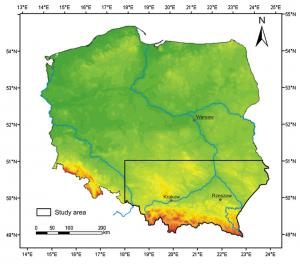Theoretical and Applied Climatology
March 2013,
Paweł Kotas a), Robert Twardosz a) & Zenon Nieckarz b)
a) Department of Climatology, Jagiellonian University,ul. Gronostajowa 7, 30-387 Kraków, Poland
b) Institute of Physics, Jagiellonian University, Reymonta 4, 30-059 Kraków, Poland
Download
http://dx.doi.org/10.1007/s00704-013-0861-9
Abstract
The paper discusses the frequency, persistence and succession sequence of six types of air mass during the period 1951–2010. The study, which relied on a calendar of air masses in southern Poland published by T. Niedźwiedź, concludes that there is no simple relationship between the persistence and the frequency of specific air masses in the region. The study found that there was a great variety in the persistence of specific types of air mass and that persistence depended more on the direction of air mass advection than on their frequency of occurrence. The study also failed to identify any strict overall rule of succession, as any air mass could follow after any other, but certain finer-grained patterns emerged. In winter and summer, arctic air (A) never followed directly after tropical air (T) or vice versa. Also, the most frequent succession sequence identified was from Polar maritime fresh air (mPf) to Polar maritime old and it accounted for the vast majority of successions from mPf into any other air mass (63 % annually and 76 % in summer).
